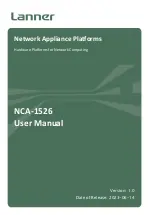
8
User's Guide ADI-192 DD © RME
4.2 Quick Start
In the INPUT MONITOR section 19 LEDs provide detailed information about the status of the
digital input signals. Displayed are Lock (flashing) and Sync (constantly lit), the frequency range
(Double or Quad Speed), a possible S/MUX indication on the ADAT input (DW), and the pres-
ence of audio data within the signal (Level).
SRC INPUT SOURCE is used to select the input signal of the sample rate converter. With sev-
eral special formats the unit can't detect the input signal's effective sample rate. Therefore the
frequency range has to be set manually via the RANGE button. In some cases the unit takes
over control, or limits the available choices intelligently. Example: With an input signal AES 192
kHz the RANGE QS LED automatically lights up and can't be switched off. However with an
input signal ADAT 48 kHz the unit can't know whether it receives 48 kHz (no LED), 96 kHz in
S/MUX format (DS), or 192 kHz as S/MUX4 (QS). So the right choice has to be performed
manually with the RANGE button.
The source and frequency range of the unit's clock is defined in the CLOCK SECTION. The
button CLOCK steps through the choices external clock (AES, TDIF, ADAT and word) and in-
ternal clock (44.1 or 48 kHz). The button STATE defines the sample rate range for both internal
and external clock. DS gives 88.2 and 96 kHz, QS gives 176.4 and 192 kHz respectively.
The input signal for each of the three outputs (output formats) is selected in the three OUTPUT
sections. Selecting the same input in the OUTPUT section as in the SRC INPUT SOURCE sec-
tion, the LED SRC indicates an activated sample rate conversion.
The section AES OUTPUT allows for further settings. The AES output signal can be chosen to
have Professional or Consumer status. Additionally at 88.2 and 96 kHz the output format Dou-
ble Wire (4 channels), and at 176.4 and 192 kHz Quad Wire (2 channels) can be selected.
Operating the ADI-192 DD with typical consumer devices is possible via the optical TOSLINK
jacks in the SPDIF I/O section. The optical input automatically replaces the rear XLR input
AES1, as soon as an SPDIF signal is detected. The optical output sends out the same signal as
the rear AES1 XLR output, i.e. channels 1/2, but carries a fixed channel status
Consumer
.
The ADI-192 DD stores all settings before switching off and sets them automatically when
switching on the next time.
Содержание ADI-192 DD
Страница 4: ...4 User s Guide ADI 192 DD RME...
Страница 5: ...User s Guide ADI 192 DD RME 5 User s Guide ADI 192 DD General...
Страница 12: ...12 User s Guide ADI 192 DD RME...
Страница 13: ...User s Guide ADI 192 DD RME 13 User s Guide ADI 192 DD Usage and Operation...
Страница 29: ...User s Guide ADI 192 DD RME 29 User s Guide ADI 192 DD Technical Reference...
Страница 40: ...40 User s Guide ADI 192 DD RME 12 Block Diagram...








































